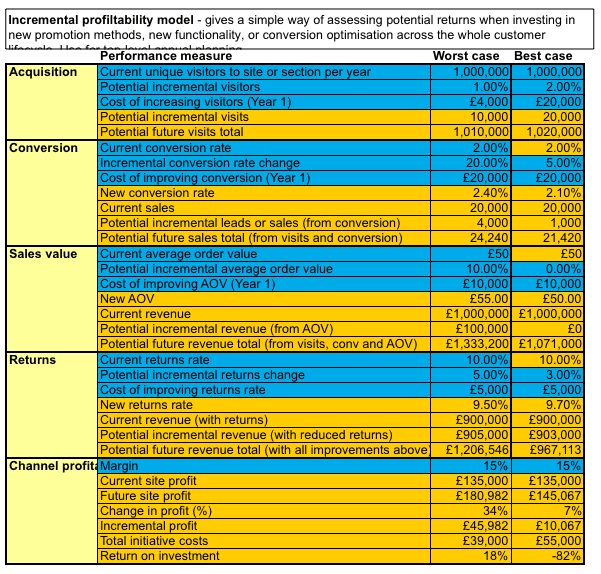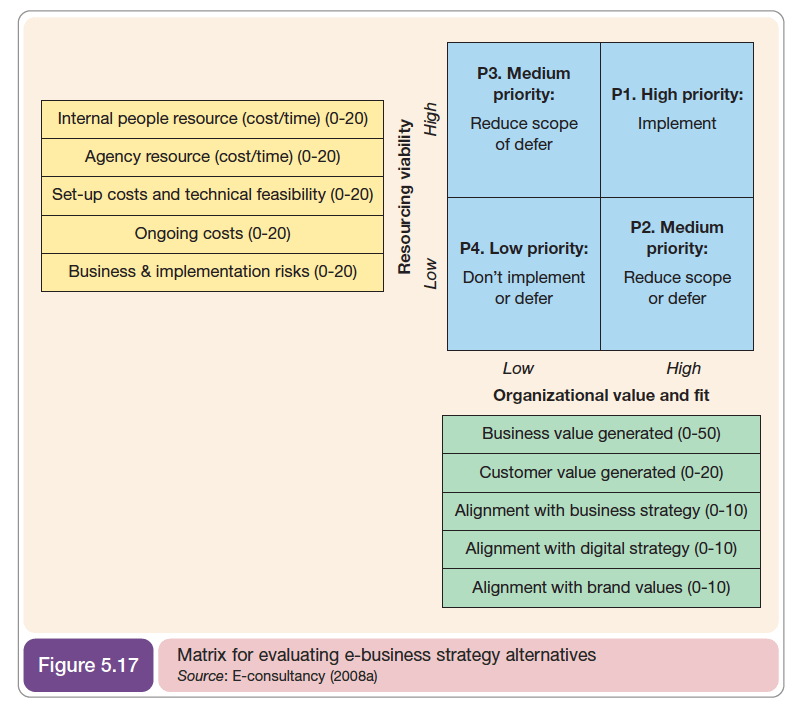How do we establish the Return on Investment from content marketing?
This is a pretty big question we're keen to explore with you since although much is written about why we must put more effort into content marketing, there's relatively little about how you make the business case and then review content ROI and effectiveness. Important commercial questions!
But, what's the best way to frame the question "What is our ROI from content marketing"? With content being everything contained on your site and then shared and syndicated to other sites and networks, it's similar to asking "How do I measure my digital marketing success outside of the paid media channels"? With that in mind, let's break it down in how you might approach it within your business or organisation. I've been discussing this with Dave and there's a lot to look at, so we'll have two posts, in the first we'll look at the business case and in the second, we'll go into more depth on measuring effectiveness of content.
What is the "R" in ROI for content marketing?
The "R" in ROI is not the same for everybody - both the purpose and objectives differ drastically not only by organisation, but by purpose.
A client recently told me that they wanted to show an increase in Facebook 'Likes', and whether I agree or not that is their "R" for that particular campaign, that's what mattered to their team, at least initially since that's how they'll be judged despite a Facebook Like having Zero Value according to Augie Ray of Forrester! But when I speak to the sales director or FD then it it's a completely different story and all about the financial return.Looking at the wrong type of non-financial return has been described by Brian Solis as Return on Ignorance, but he acknowledges that other forms of Return may be useful to build into the business case:
- Return on Engagement
- Return on Participation
- Return on Involvement
- Return on Attention
- Return on Trust
Augie Ray has also written about approaches to measuring the ROI of social media which can also be applied to content marketing or indeed any digital marketing investment. He describes a Social Media Marketing Balanced Scorecard that considers metrics from four different perspectives:
- Financial: Has revenue or profit increased or costs decreased?
- Brand: Have consumer attitudes about the brand improved?
- Risk Management: Is the organization better prepared to note and respond to attacks or problems that affect reputation?
- Digital: Has the company enhanced its owned and earned digital assets?

Source: Forrester Blog post: The ROI of Social Media Marketing
All this suggests the need for a number of metrics, or KPIs to be tracked as part of a campaign, that way the soft or brand based metrics are taken as seriously as tactical KPI's and bottom line sales - all are interlinked. At least if you have a broader dashboard in mind you're clear on what you are choosing to not track, as well. We'll look at what these KPIs need to cover in Part 2.
How do we prove value?
So first we need to scope what we're measuring a challenge since online content is an asset that can generate value into the future. So how does content potentially generate marketing value? Discussing this with Dave, we think the best approach to put a $, £, € amount to this value is to create a conversion model spreadsheet which allows you to model the incremental improvement in value of leads and sales across .
- Reach more to improve brand awareness and brand interactions - content is great in helping us increase awareness into new audiences which potentially translates into more visits to a site, social platforms and and if relevant our offline stores. So, we're adding more visitors to the top of our conversion funnel which translates to more leads and sales. This is probably the main way in which content helps create value. When we create new content, we can promote content to existing contacts, place it in bought media and earned media and through the fantastic online sharing or amplification effect we can reach new audiences. In the longer-term, we can potentially reach even more people through SEO - an often missed opportunity with content marketing.
- Convert more through improving brand familiarity and favourability - some types of content can help increase conversion rates since the content may influence perceptions of a brand. For example, in B2B marketing, thought-leadership whitepapers may showcase the expertise of staff or show the quality of a service. In consumer marketing, content showing how to use products or services and the benefits can increase conversion rate. Oftentimes, we expect the increase in conversion will be much smaller than the benefit of reaching more and harder to estimate!
Of course we also need to factor in the not inconsiderable costs of producing, promoting and distributing the content assets. Online content can also produce cost savings through web-self service as people download promotional material or access support information. If these are important for your type of content these should be modeled too.
So how can we model this in practice. This is a spreadsheet we created originally to create a business case for conversion rate optimisation projects, but is also looks at incremental visitors, so it can be applied to content marketing projects also.
 Models like this are all well and good, but they are only as good as your estimates of how conversion will be increased, so how do calibrate them initially? How well you can specify the worst and best case depends on how active you have been in content marketing already AND how good you are at tracking. If you know the visits, views and leads generated through previous content marketing efforts then this will enable you to create more accurate business case models in future.
Models like this are all well and good, but they are only as good as your estimates of how conversion will be increased, so how do calibrate them initially? How well you can specify the worst and best case depends on how active you have been in content marketing already AND how good you are at tracking. If you know the visits, views and leads generated through previous content marketing efforts then this will enable you to create more accurate business case models in future.
Another point to consider is the time period to assess returns. The time over which you measure some pieces of content is of crucial importance! The content on a landing page or product page may only warrant a short test to check you're getting the result that you need and not murdering conversion rate 😉 At the same time evaluating the value of a new video or ebook that's maybe cost a few thousand pounds warrants a much longer time-frame - or at least you'll focus on the softer metrics initially like view vs bounce rate.
The beauty of content marketing of course, is that the return should last for months if not years!
Of course you'll see some content types being more popular than others - like videos or ebooks maybe - so checking where the investment in content turns more of the dials above makes good sense - it goes without saying to do more of what works.
Other factors in making the business case
A full business case will include a range of other factors that make up the cost-benefit analysis. To help think through these Dave has this from his Ebusiness and Ecommerce Management Book. This also has a scoring system to rate different content marketing or digital marketing projects more generally where is a lot of competition for new digital platform projects.

Measuring cost
It seems a little obvious, yet I'll say it anyway, we'd also suggest that keeping a close eye on the cost of content marketing is an important, practical measure too since it's easy for things to run away, so checking that you're staying to budget is pretty important too. Don't forget the hidden costs. With content marketing you have:
- Planning costs
- Authoring costs - staff time or agencies
- Design and other production costs
- Syndication costs
- Bought media costs for paid for placements
- Moderation and curation costs
We hope you find these tools useful?
In Part 2, we'll cover more specific KPIs to measure content effectiveness, in the meantime we'd love to know if and how you measure returns on content marketing?




 Models like this are all well and good, but they are only as good as your estimates of how conversion will be increased, so how do calibrate them initially? How well you can specify the worst and best case depends on how active you have been in content marketing already AND how good you are at tracking. If you know the visits, views and leads generated through previous content marketing efforts then this will enable you to create more accurate business case models in future.
Models like this are all well and good, but they are only as good as your estimates of how conversion will be increased, so how do calibrate them initially? How well you can specify the worst and best case depends on how active you have been in content marketing already AND how good you are at tracking. If you know the visits, views and leads generated through previous content marketing efforts then this will enable you to create more accurate business case models in future.



